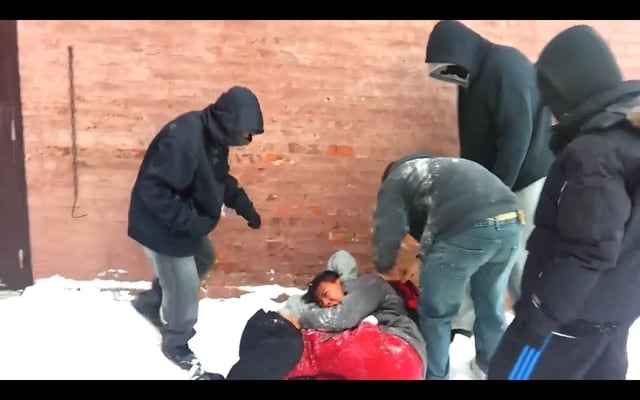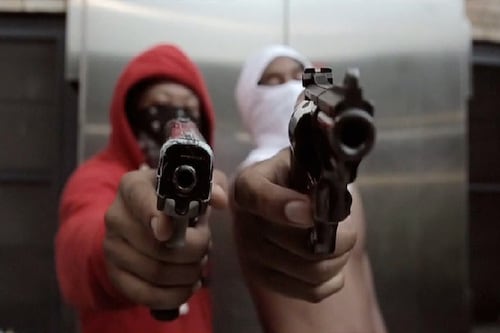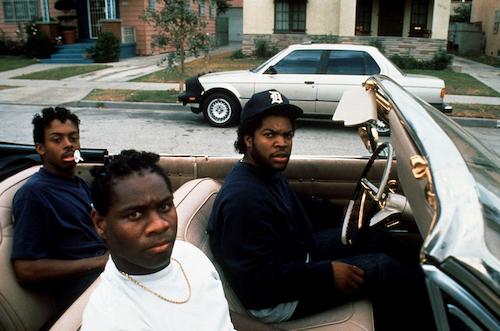If you want to learn how to fight, learn how to fight in the hood. But it’s about more than just fighting. The following is an important lesson I learned from living and fighting in the hood.
I grew up poor in a dangerous part of town. If you haven’t been there before, you know an area like this as “The Ghetto.” I’m partial to calling them “The Projects” or “The Hood.”
Hell, by any other name, is still hell.
The violence in public housing projects is legendary. In fact, over the past two decades in public housing projects across the United States, violent crime has fallen everywhere except low-income public housing. There, it continues to rise.
You can read the report by Housing and Urban Development (HUD) on violence in public housing here.
While I accumulated many valuable lessons and perspectives on life, they came at a steep price. Say what you want about rich kids, but quality of life matters more than most people want to admit when it comes to raising children.
Assholes come from all socioeconomic backgrounds. The only difference is in the hood I can’t be a 16-year-old asshole in my new car. At least not one acquired legally.
I will never live in a housing project again.
The 18 years I spent there were more than enough. I learned about human nature, basic survival and how to behave to stay safe in a den of jackals. The following is an important lesson I learned from living in the ghetto.
Being Willing to Fight is More Important Than Actually Fighting
In the hood, there’s always someone looking for a fight.
When I was younger, I thought I had a sign on my back for fights. In retrospect, I only fought more than a slightly above-average amount. “Slightly above-average” means about once a week.
There was a pattern.
One kid found a reason to fight another. The target of the aggression responded in one of two ways: he ran or fought. In the ghetto, running from a fight is the worst thing you can do.
For starters, there’s the obvious problem: you gained a reputation for weakness. That reputation then gets put to the test. Repeatedly. This means more confrontations, as you’ve now identified yourself as an easy target.
Secondly, ghettos are small places. Everyone knows where you live. They’d just find you again—either at home or at school—to deal with the “problem”. In many ways, running isn’t even a legitimate response. It only delayed the inevitable fight.
Check out the rest of my articles on living in the hood
Fighting In The Ghetto Isn’t Much Better
Choosing to fight wasn’t much better.
If you won the fight, they’d come back later with a group. If you lost the fight, you’d be tormented and challenged again because losing a fight displays weakness. It was a choice between the lesser of two evils.
I always chose to fight, but with a slight modification.
Once I realized the person intended to hurt me, I threw the first punch and committed to extreme violence. I didn’t go overboard, but my intentions were to come out of the fight clearly as the victor. Breaking even was still a loss.
[Read: “How to avoid a street fight, and what to do if you can’t”]
This didn’t prevent retaliation.
This was terrifying since I knew some kids had access to guns. I didn’t win every fight either. I’m not sure what my unofficial record in the street was, but I remember being in pain and spending a lot of time wondering if I was going to fight today.

The Good Part of Street Fighting
Fighting did, however, accomplish something very important that made my life a little easier: anytime a person decided that I was a target, they knew the encounter would get violent. This is how the hunted becomes the hunter while playing defense.
This also revealed a subtle difference between bullies and genuinely violent people.
The conventional advice for dealing with bullies is to stand up to them and show that you aren’t afraid. What most parents are too politically correct to teach their kids is that until you exchange blows, all you’ve shown is that you’re too lazy to run.
Whether you win or lose, standing up to a bully only counts if you get into an actual fight. At that point, the bully realizes that you aren’t an easy target and goes on about his business.
My life would have been a lot easier if the ghetto was only full of bullies.
The Ghetto Has Something Worse Than Bullies
Instead, ghettos are full of aggressive kids who have a genuine taste for violence and dominance. I call them jackals.
These are the ones most likely to retaliate and to recruit groups of other like-minded individuals to make your life miserable. They’re the ones who seriously hurt people. The response is still the same: strike first, talk later.

Jackals love a good fight and genuinely want to dominate or “bitch” you. Bullies will try but are unpleasantly surprised when you fight back.
Bullies and Jackals are both still human beings and operate under the same rules that other humans do: they wish to put forth as little effort and avoid as much pain as possible en route to their goals.
It’d be easier if they could control you without resorting to violence. To them, violence is fun, but it costs more effort than making a few threats and having you fall into line without resistance. Resistance makes them experience pain.
The kids who were willing to fight back were avoided.
Strong or weak didn’t matter: there was a big white kid who could have kicked any of our 7th-grade asses, but he was continually dominated by bullies because he wasn’t willing to fight.
[When you have street smarts, you can avoid a lot of these situations before they happen. Learn how to develop them here.]
The Lesson
It’s not the outcome that is important when it comes to standing up for yourself.
Aggressors pick their targets because they look like an easy mark. These people are used to their targets retreating at the first show of force.
Even if you don’t think you can win the fight, attacking back will make many of them evaporate.
Not only do you get a short-term victory, but the long-term psychological advantage is now yours. At that point, your most powerful weapon is their fear.
The best defense is an unintimidated offense.




